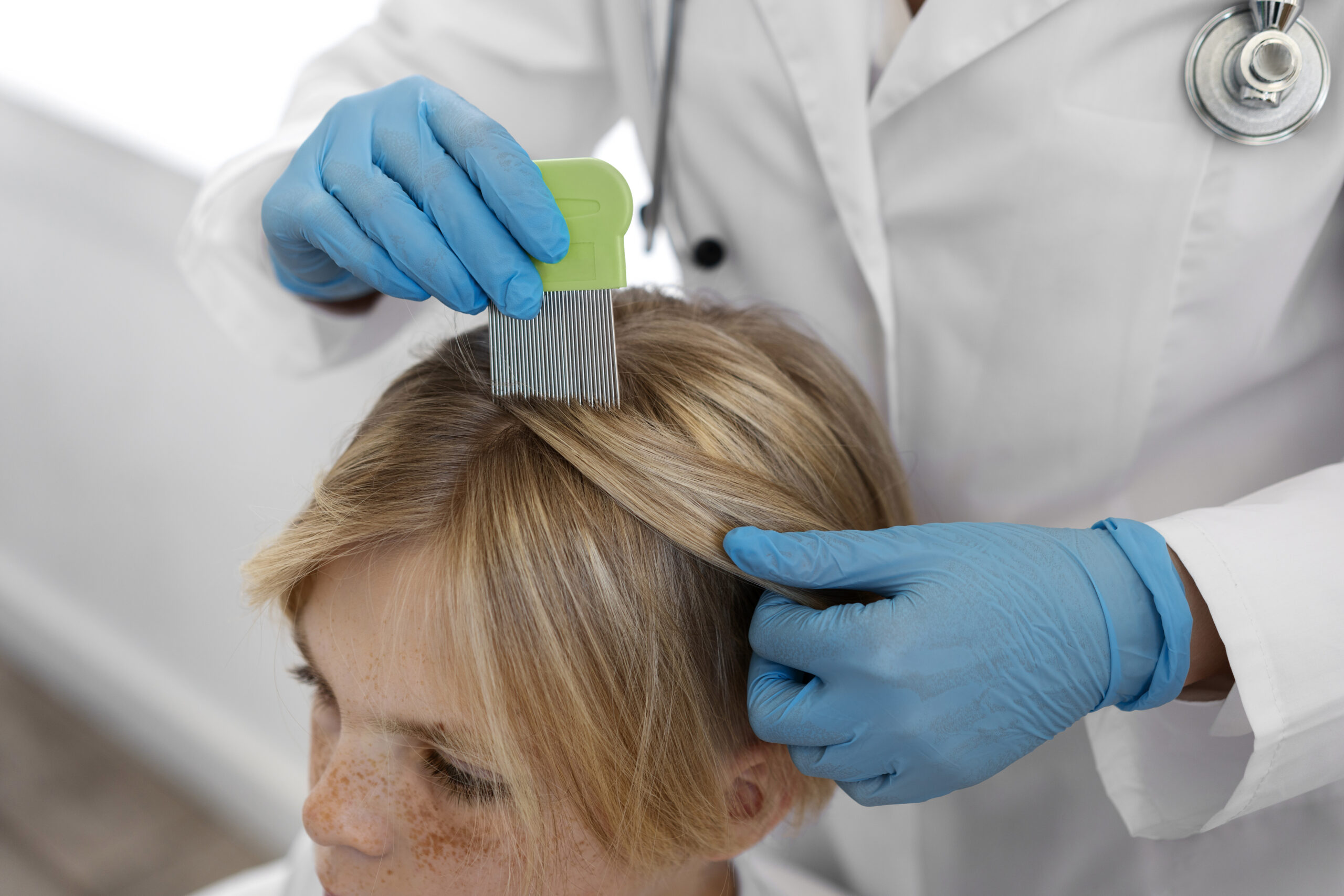Lice Infestation
Pediculosis, the medical term for lice infestation, is a common ailment that affects millions of people worldwide. These microscopic, wingless insects cause excruciating itching and agony because they feed on blood and reside on people’s scalps, bodies, or pubic regions. It is possible to control and avoid infestations by having a thorough understanding of the biology of lice, how they spread, and the available treatments.

What Are Lice?
Based on where they like to live, lice are microscopic parasitic insects that fall into three primary categories: head, body, and pubic lice. Head lice are parasites that feed on the scalp; they are usually discovered in the back of the head, behind the ears, and close to the neck. Body lice migrate to the skin to eat after emerging from clothing and bedding. Infesting the coarse hair of the pubic area, pubic lice, often called crabs, can also be found in other body hair, including the hair on the chest and underarms.
Symptoms of Lice Infestation
The following are the main signs of a lice infestation:
- Severe itching brought on by an allergy to lice bites
- Easily noticeable lice or nits (eggs of lice) adhered to the hair shaft near the scalp
- Continuous scratching that causes sores on the scalp, which can result in secondary bacterial infections
Causes and Transmission
Lice are extremely contagious and can be transferred by:
- Direct head-to-head contact
- Personal objects like hats, brushes, and combs being shared.
- Residing in small spaces
Due to regular interaction with peers, particularly during activities that involve close personal touch like sleepovers or sports, children between the ages of 3 and 11 are most vulnerable to head lice.

Risk Factors
The following elements raise the possibility of a lice infestation:
- Intimate interactions
- Living quarters shared
- Personal belongings shared
Diagnosis
Usually, the diagnosis entails:
- Visual inspection, which entails closely inspecting the scalp for live lice or nits.
- Using a comb with tiny teeth to find lice and nits

Treatment Options
Among the efficient treatment methods are:
- Topical applications using prescription or over-the-counter shampoos, creams, or lotions that contain insecticides such as pyrethrin or permethrin.
- Manual removal of lice and nits following topical treatment with a fine-toothed comb
- Cleaning the environment by using hot water to wash and high heat to dry personal things, clothing, and bedding. Put anything that can’t be cleaned in plastic bags and store them there for at least a couple of weeks.
Prevention Tips
To prevent lice, one must:
- Avoiding head-to-head contact
- Refusing to share personal goods
- Regularly checking the head, especially in toddlers, to detect infestations early
Pharmacist’s Role
In order to control lice infestations, pharmacists are essential since they:
- Educating people about treatment choices and preventive
- Suggesting efficient over-the-counter remedies
- Telling individuals to get help from a doctor if OTC remedies don’t work or if they exhibit symptoms of a subsequent infection

Conclusion
Although prevalent, lice infestations are treatable conditions. Lice can be successfully removed with the right care, which includes cleaning personal items thoroughly and using medicated shampoos. Controlling the spread of lice requires preventive measures including frequent inspections and refraining from sharing personal things. Working together with pharmacists and other healthcare professionals guarantees thorough treatment and effective control of lice infestations.

